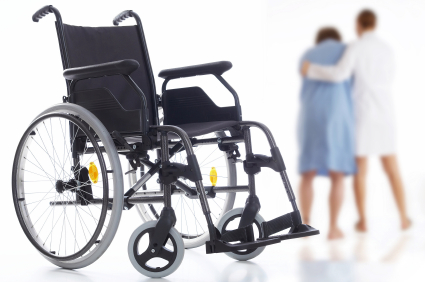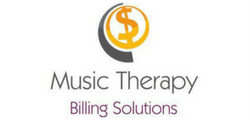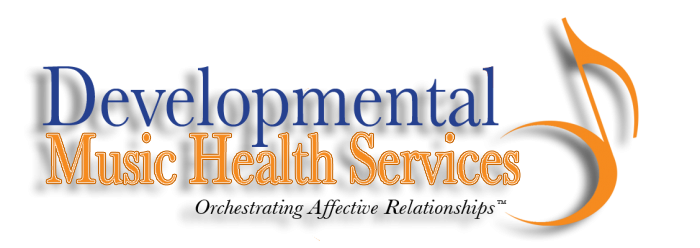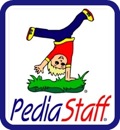There’s been a lot of exposure and interest in music therapy this spring…and one big reason is because of Representative Gabby Gifford’s therapy treatment. My music therapy friends and I have excitedly been sharing both articles we’ve written and those that have appeared on CNN, ABC, and the local Houston TV station.
Although the circumstances are tragic, this type of national exposure and interest is great. We, as a profession, have a unique opportunity to educate the public about what we do best.
But I have a confession. There’s a song that keeps appearing in the stories…and it’s driving me nuts!
This song has been used as an example of how music is used to help someone re-learn how to walk (otherwise known as gait rehabilitation). This particular song is great, but…
Okay, I’ll just say it:
“When the Saints Go Marching In” is NOT a good song to use in gait rehabilitation!
Yes, it has “marching” in the title. And, yes, it’s a great song for music therapists to have in their repertoire. But when you’re looking at songs to help someone with a neurological insult re-learn how to walk? It’s not the best choice. Here’s why:
- The strong beats are on 2 and 4. To me, this is the biggest reason why this song isn’t the best choice. In general, songs with the strong beats on 1 and 3 are better choices for helping a person’s brain organize it’s motor system. This song begs for you to clap on 2 and 4. (And for a funny reminder of the difference between the strong beats on 1 & 3 versus those on 2 & 4, check out this video of Rev. Wright demonstrating the difference.)
- The melody has lots of long, sustained notes. Think about it…”Oh when the SAINTS go marching IN, oh when the SAINTS GO MAR-CHING IIIIINNNN….” All those words in CAPS are long notes that don’t provide lots of musical information. Of course you can provide that extra information through your accompaniment…but why not have the melody help?
- The melody starts with a pick-up. All aspects of the music should help facilitate the motor movement. And having a moving melodic line that doesn’t start on a strong beat? Probably not the best facilitator. (Note that this isn’t a deal breaker–as you’ll see below–but the combination of these reasons in “When the Saints” is what makes it a not-so-good choice.)
- It loses it’s musical integrity if played too slowly. There are some songs that still “work” when played too slowly…but “When the Saints” isn’t one of them. As a therapist, chances are that when working with a client on gait rehab, they will be walking slowly. Very slowly. So you need a song that still works when played slowly. And that’s not this song. (To be fair, you can make this song work for some clients if their gait is fast enough and you can play this song at a more “normal” tempo.)
This all boils down to understanding that, as music therapists, we need to pick songs–and play them–with musical qualities and characteristics that work best for our clients. Melody, timbre, harmony, dynamics, rhythm…all are important qualities that have the potential to enhance the therapeutic benefit.
Now that I’ve mentioned all the reasons why “When the Saints” isn’t a great choice for gait rehab…here are other songs that work better:
- “I’ve Been Working on the Railroad”
- “You Are My Sunshine”
- “This Land Is Your Land”
- “Battle Hymn of the Republic”
- “Oh Susanna”
- “Zip-A-Dee-Doo-Dah”
- “This Little Light of Mine”
This post is dedicated to my good friend Sarah Johnson, music therapist-extraordinaire at Poudre Valley Hospital (Fort Collins CO). Sarah is the guru of music therapy and rehabilitation and she taught me the importance of using music in a functional way.



 orcid.org/0000-0001-8665-1493
orcid.org/0000-0001-8665-1493






{ 7 comments… read them below or add one }
Awesome post, Kimberly! Got to love the media, right?
Thanks for writing on this! It’s a good reminder to re-check your go-to-songs for appropriateness. (I love Sarah Johnson!)
Thanks for this post, Kimberly! I had to admit that as soon as I read it, I sat down and played through all of these songs on guitar as if I were leading the song for singing and observed something interesting: my default accompaniment many of these tunes using a sort of country-swing strumming style with a palm mute (I don’t know if this makes sense – but the counts would be 1 2+ 3+ 4+ with the strong beats on 2 and 4, with eighth notes swung). This style – with the strong beats on 2 and 4 – is, as you described above, exactly the opposite of what a music therapist would want when using these songs for gait training. However, this accompaniment sonds great for song leading in a lively, up-beat tempo with stylistic interest — and since much of my clinical work involves working with groups of older adults, this is the style of accompaniment I tend to gravitate towards because I know it is engaging and supports my clients’ goals (e.g., relating to reality orientation, socialization, etc).
Then, I played through these songs again with gait training in mind: slowly, emphasizing beats 1 and 3 with strong guitar strums, as you described in your post. In this case, the musical elements that are so important for, say cognitive or social goals (such as playing in a stylistically appropriate manner as I described above), take a back seat to temporal aspects of music which support gait rehabilitation and priming of the motor system for movement: meter, rhythmic, and tempo.
So, I guess what makes me so excited about your post, and my own experience in exploring your points through playing through the songs, is the reminder that music therapy is so powerful because music is not static and musical flexibility is such an important quality for a music therapist to hone and develop throughout his/her career. Music therapists may use the same piece of music in many different ways depending on our clients (i.e., using “You Are My Sunshine” to support gait training versus song singing for reminiscence and socialization), and it is this aspect of our field which makes what we do so effective and unique.
(Whew, thanks for listening. I hope this made sense!)
~Carolyn
Yes! You bring up a good point–we should periodically not only expand our repertoire, but also re-evaluate our go-to songs. Thanks Carolyn! ~Kimberly
Wow Carolyn! I think you points and conclusion–in your last paragraph especially–are awesome and spot-on! Thank you for taking the time to explore this music…and especially for sharing your insights! ~Kimberly
This is a *fantastic* post!! Yay, thank you
Do you have any more suggestions for songs that ARE appropriate that are not folk tunes but would be good with adults?
Hi Kimberly,
Enjoyed your post because I was imagining it teaching other types of therapists and workers about the neurological aspect of music. It’s not just a “nice song” – there’s things happening in the music that can be manipulated for or against an outcome.
And your providing of songs that do stimulate gait training is helpful for the same reasons.
You must log in to post a comment.